by Sierra Simone, Joanna Shupe, Eva Leigh, Nicola Davidson, and Adriana Herrera (reprinted with permission)
We are a group of romance authors—Sierra Simone, Joanna Shupe, Eva Leigh, Nicola Davidson, and Adriana Herrera—who joined forces to write a spicy little anthology, which began as a title: Duke I’d Like to F… DILF, but make him historical!
The title came to Joanna during a lockdown fever dream. When she realized no one had yet claimed this concept, she first envisioned it as a full-length novel, perhaps co-written with Eva Leigh/Zoe Archer. The logistics of co-writing, however, felt daunting, and the two authors decided to create an anthology instead.
They then approached their “dream team” of talented writers who brought the steam when it came to storytelling. The goal was to write new, hot historical novellas that leaned toward bonkers. Old-school wild, but with a more modern, inclusive twist.
It helped that all the authors got the concept right away, loving the DILF idea as much as Zoe and Joanna did. And it turned out that romance readers were as hungry for dangerously spicy historical stories as we were—enough readers that we eventually landed on the USA Today bestseller list!
In this post, we’ll walk through how we planned and wrote our novellas, then published and marketed the anthology to become a bestselling title. We hope this helps other authors considering teaming up for an anthology of their own!
Planning and writing the anthology
Everyone plotted their own stories, and we hired a single developmental editor (Sabrina Darby) for consistency. We decided the anthology would have a short shelf life, allowing each of us to publish our stories separately after unpublishing the anthology. This seemed the best way to handle the logistics, as we needed one person overseeing the accounting and payments, and it didn’t seem fair to leave that one person responsible in perpetuity.
We also knew we needed to follow through on the promise of the premise. We think this is essential to an anthology’s success, since an anthology isn’t only competing alongside other anthologies, but alongside standalone, solo-authored books as well. And unlike a standalone novel, an anthology can scratch the same reading itch repeatedly, while also highlighting the vision and voice of each author. So while individual authors wholly generated every Duke I’d Like to F… story, we focused on fun, wild tropes when we came up with story ideas, and upped the steaminess as we wrote and revised to ensure the stories delivered what the title promised.
Publishing the anthology
After we decided on timelines and when we’d revert rights (roughly nine months after release), we divvied up responsibilities as evenly as possible. One person handled the back-end parts of publishing and accounting, one person liaised with the cover designer, one person set up virtual events and launch parties, etc. We also knew the importance of keeping our budget lean, but not at the expense of a professionally produced package. To that end, we got our covers and graphics professionally designed (Natasha Snow Designs and Qamber Designs, respectively), and we also decided to pay for professional editing and proofreading. However, since one of us already had Vellum, we used Vellum for eBook and print formatting, and we used a PR professional one of us already kept on retainer to handle release blitzes and blogger promo. We also kept our paid advertising spend very low—a couple hundred dollars for release week—and focused on organic messaging like newsletters and social media posts during release.
We published individually on each platform rather than going through a digital distributor, and chose to distribute the paperbacks through Ingram to make it easier for bookstores to carry them. We were also lucky enough to partner with indie bookstore The Ripped Bodice for exclusive signed paperbacks, which we did via signed bookplates.
Marketing the anthology
We wrote the Duke I’d Like to F… anthology knowing we’d love to list, so very early on in the process we made a marketing plan that revolved around a discount promotion. We knew any sale would flounder if we simply marked down the price and hoped for the best! Rather, a sale with a view toward hitting a list needed support and underpinning by a few keystone strategies.
These were the most important tactics we used to hit the USA Today bestseller list:
1. Ran a BookBub Featured Deal
While a Featured Deal was a central part of our plan, we opted to wait for two months after release before we submitted for one. This was mainly about where we were in the calendar year; with a mid-November release, having a sale any sooner meant competing with the holidays for attention. Instead, we chose to apply in January after the holiday dust settled and readers resumed their usual reading and purchasing routines.
We decided on a 99-cent price point for our sale since we wanted a real incentive for readers who might be on the fence about investing in an anthology versus a full-length novel or ambivalent about a subgenre of romance they didn’t normally read. We also decided to mark down our prices across the board—not only in the United States—to maximize our messaging and get the anthology in as many readers’ hands as possible, knowing the other goal of our sale was to grow our reader audience across the globe.
When we submitted our deal to BookBub, we highlighted the accolades the anthology already received, including a glowing review from Entertainment Weekly, and also positioned the anthology as relevant to the current romance climate. With the success of Bridgerton over the holidays, we knew readers were primed for historical romance with lots of spice! Additionally, we included how we’d support a Featured Deal if we were chosen: social media promotion, a coordinated blogger campaign, and a newsletter push.
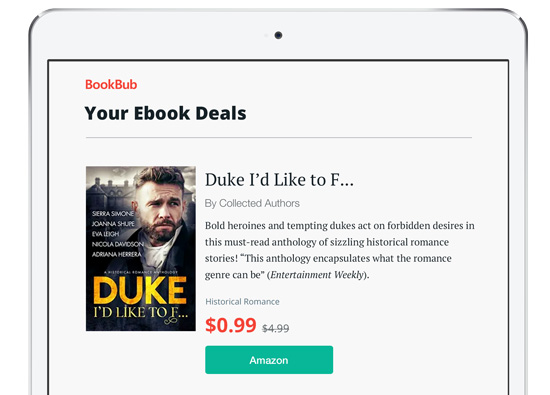
2. Spoke directly to readers using our newsletters
Leveraging our newsletters was a must for two reasons. First, newsletter subscribers comprise an audience who already elected to hear about things like discounts and sales. Second, unlike social media posts, a newsletter is not at the mercy of any kind of algorithm, so we knew it was an incredibly effective way of reaching the people who’d most want to hear about a sale from us!
Because we all came from slightly different arenas in romance, each of us used an individualized newsletter strategy tailored to our own fanbase. We zeroed in on the appeal of our anthology (spice! spice!), the relevancy of the sale (Bridgerton!), and that oh-so-tempting price point of less than a dollar.
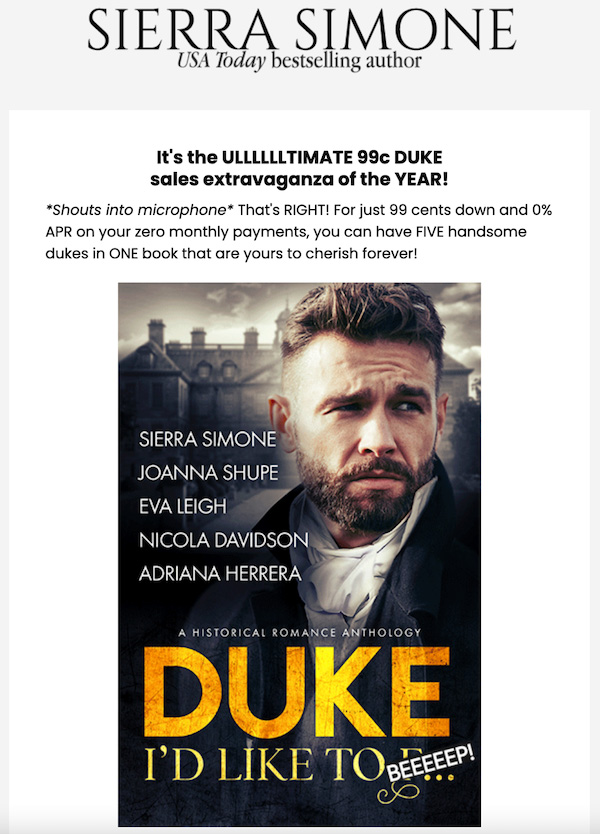
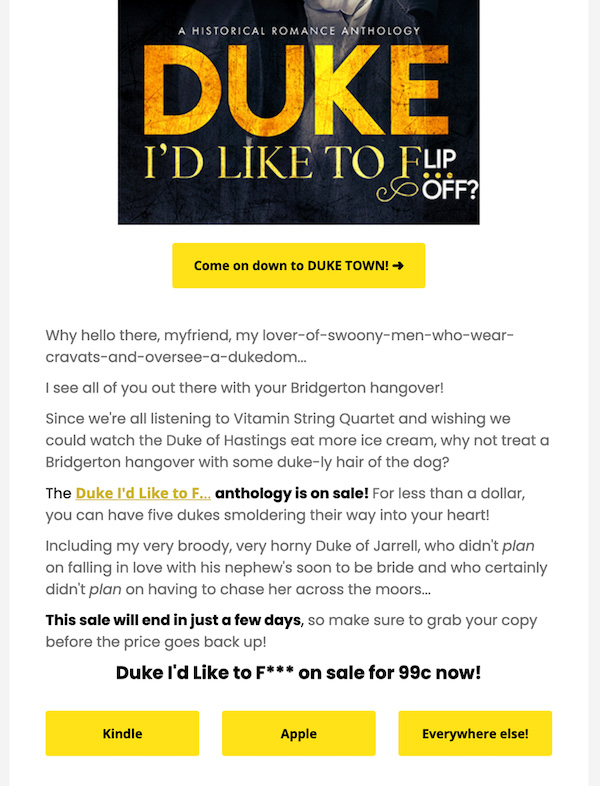
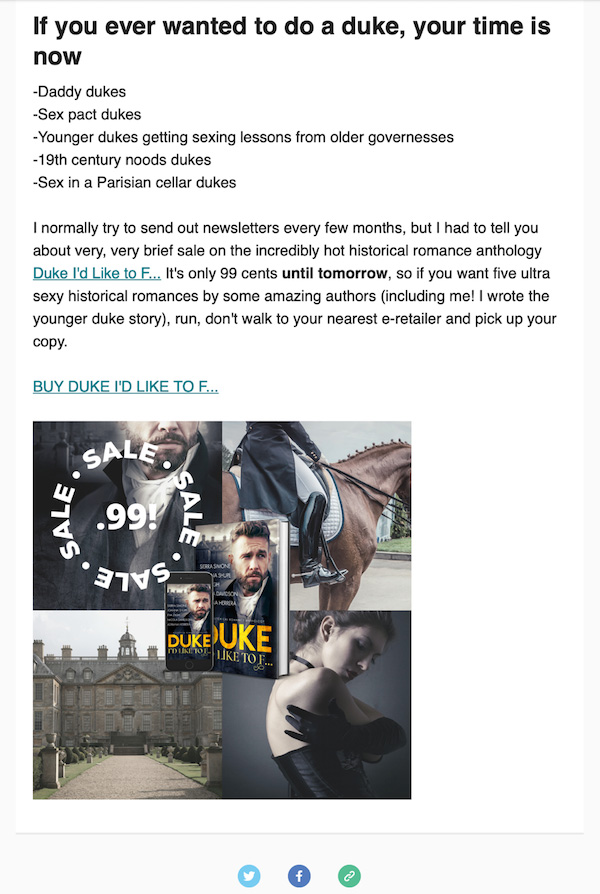
3. Ran social media promotions
This is one of the simplest (and cheapest) ways to get news out into the world! A key message we wanted to drive home was the price point—99-cent is an easy impulse-buy—so we splashed that 99-cent number all over the graphics and captions. We also emphasized that the sale was for a limited time only to underscore the urgency and push readers into that one-click purchase.
We didn’t spend any extra money here; we created the graphics using Canva and stock images we already had. We used 3D mockups from Cover Vault, also free. This arm of the strategy cost nothing but a few minutes!
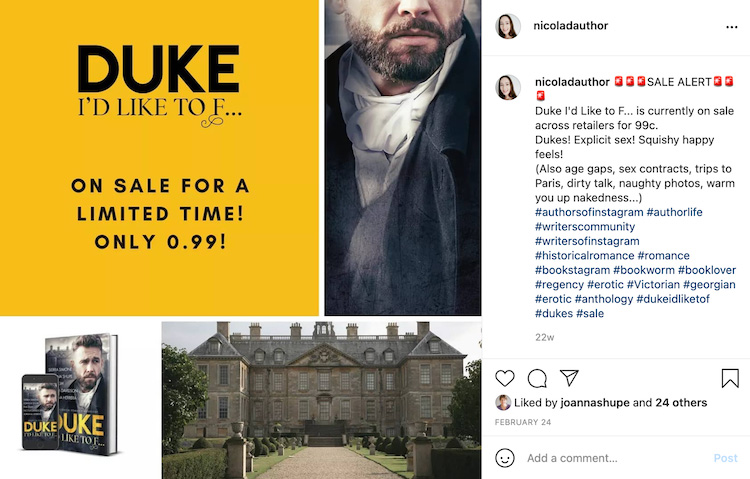
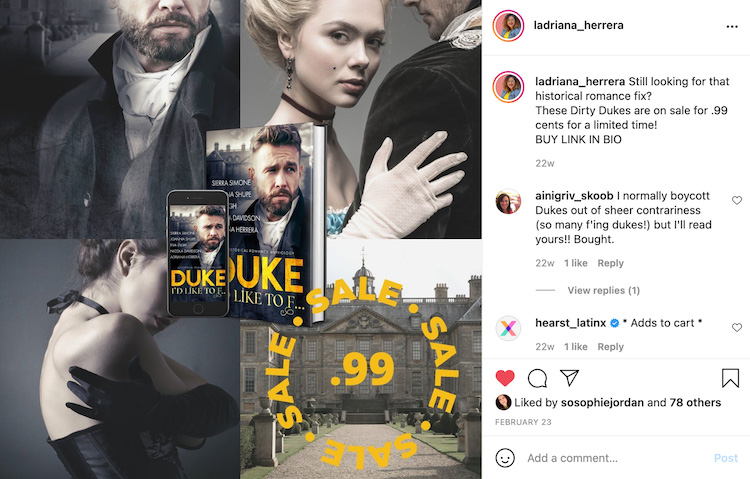
4. Set ourselves up for success
We knew running a sale with a BookBub Featured Deal would drive a huge amount of traffic to our storefronts and to our book, and we didn’t want any friction between a reader seeing Duke I’d Like to F… on a vendor and purchasing. We ensured the blurbs looked good, updated our storefronts with any relevant accolades, and changed the price a few days before the Featured Deal ran so any hiccups ironed out well before the deal went out to subscribers.
And finally, because it was also important that Duke I’d Like to F… helped new readers find our backlists, we updated our eBook files with bespoke backmatter to drive readers to a specific solo title we thought comped best to our DILF story!
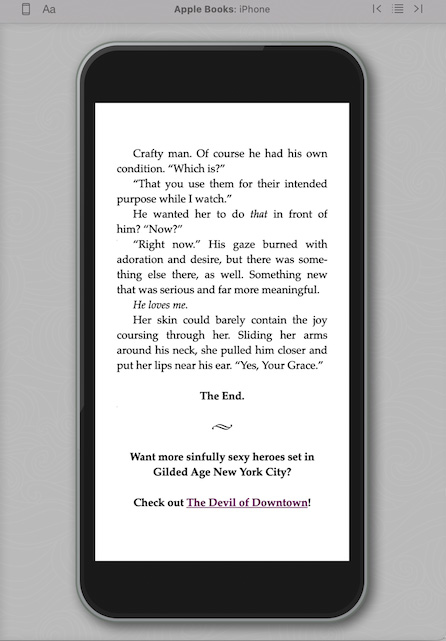
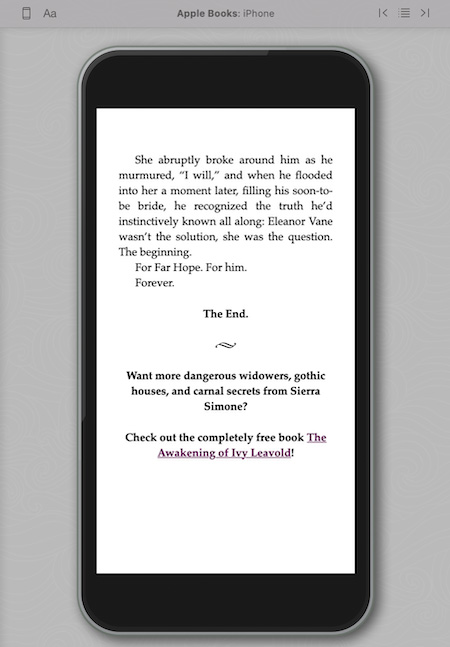
Results!
We hit #19 in the entire Kindle store, #12 in the Apple store, and #7 in the Nook store. That extra visibility got us in front of even more readers, and the low price point did the rest! And ultimately, all our efforts paid off: —we made the USA Today list for the week of our Featured Deal.
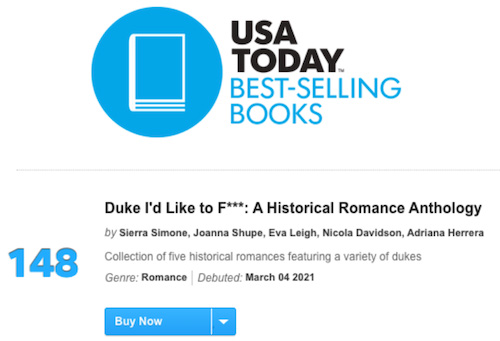
In addition to moving several thousand units, we increased our net revenue from the previous month by over a third. This meant even with the cost of the ad, we’d turned a very good profit. Even better, we saw qualitative and quantitative boosts to our backlists, cross-pollination between our audiences, and a vocal demand for another anthology in the same historical-but-hot-hot-hot vein.
When we put our follow-up anthology Rake I’d Like to F… up for preorder in late July, we gained several hundred preorders within a week, all from the audience we’d built from leveraging tools like a BookBub Featured Deal to find the readers looking for a romance fix like ours. So the return from running the sale didn’t only end with Duke I’d Like to F…, but is now spilling over into our follow-up collaboration too!
Looking back, we received three central takeaways
There are always more readers
By the time we ran our BookBub Featured Deal, it had been nearly three months since we released Duke I’d Like to F… We’d posted, sent newsletters, advertised, hosted a launch party and live author chats, and saw a great reader response on social media and in reviews. It felt like we’d found all of the readers willing to take a chance on our naughty dukes, but our sale proved that was undeniably not the case. There are always more readers out there who will want your book—they just haven’t heard about it yet!
Know what makes your book stand out
Readers aren’t just looking for a good deal, they’re looking for their next favorite book! Duke I’d Like to F… offered a clear, specific niche in the market from the start, one we highlighted with all our branding and messaging. This meant when the time came for our sale, we knew exactly how to pitch and promote the anthology. It meant we knew the answer to the very important question, “Why this book?” The anthology market is crowded—well, all markets are crowded!—so knowing what makes your anthology unique not only in its genre, but outside of it, gives you a huge amount of leverage while marketing. A killer hook and a direct, juicy premise (dirty dukes getting very dirty!) lets you drive home the answer to why this book in the short amount of space a social media caption, BookBub blurb, or ad copy will give you.
Develop a plan early instead of winging it
If you’re looking for a fun way to reach new readers, cross-pollinate with colleagues you admire, and potentially hit a list, we cannot recommend doing a multi-author anthology enough. But you must set your anthology up for success from the beginning. Identify a premise/hook/concept that’s timely or fresh for your genre, then choose a title, tagline, cover, and blurb to hammer this premise home. Choose collaborators who bring different creative visions and audiences to the table, and whom you’ll enjoy working with. Establish clear communication from the start, and have the group divide responsibilities according to strengths. Have a plan for money and goals; our success in hitting the list wouldn’t have been possible if we hadn’t stayed on the same page. We all posessed the same vision and urgency, and we all understood the reasoning behind every decision we made.
Last, all of us authors are here for the long haul, so while getting that USA Today label was incredible for its own sake, it was the readers we reached who made the entire project worthwhile. Yes, we brought new readers to our solo works, but we also pulled together an audience hungry for more anthologies like Duke I’d Like to F…,which means we have built an enduring and profitable brand writing sexy stories we love, for readers we vibe with. What more could any romance author want?
